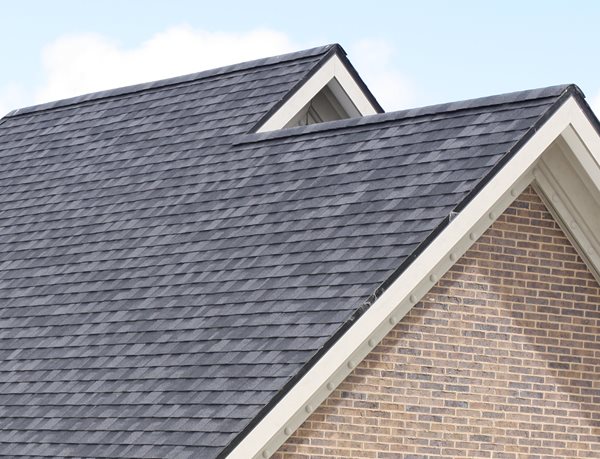
Asphalt shingles are one of the most common types of roofing material. They are fairly inexpensive compared to other materials and are also easy to install. This makes them an attractive choice for the majority of homeowners. In fact, asphalt shingles account for nearly 75% of all roof installations. Recent developments over the years have increased the durability and performance of this material.
Organic shingles are an old form of asphalt shingle. These are often made from recycled paper, infused with asphalt and subsequently compressed under high pressure. Organic shingles are much more flexible than their fiberglass counterparts and also a lot more difficult to tear. This makes them easier to install during cold winter weather. Organic shingles are quite durable given their heavy weight which makes them ideal for houses in cold climate or subject to heavy winds.
Fibreglass shingles are a new, popular choice. The mat is composed completely of glass fibres (also known as composition shingles). Asphalt as well as mineral granules are coated on the surface of the mat. These shingles are lighter given they have a smaller content of asphalt, about 40% less than organic shingles. This makes them also a more environmentally-friendly choice. Given the lower asphalt content they are also cheaper than their organic counterparts. To install, an underlayment of asphalt felt needs to be installed before placing the fibreglass shingles.
Asphalt shingles come in two popular models: three-tab and architectural (sometimes referred to as laminated. Each model is designed uniquely and has different features.
Three-tab Shingles
This model is one of the most popular given that it is the most economical. This model is not that heavy and is highly effective for low sloping roofs. It is not very effective at protecting against high winds. If your location is prone to winds stronger than 60 mph, it is not recommended to install three-tab shingles.
Architectural Shingles
This model is known for its design features. When put in place, the shingles have a dimensional or layered look to them. The layers of shingles are bonded with an asphalt sealant. They are heavy but as a result are highly protective against strong winds up to 120 mph. Given their layered look, they do a great job at hiding imperfections in your roof. This is an aesthetic choice which is becoming popular among homeowners even if they are generally 20% more expensive than three-tab shingles.
Overall, there are not many differences between three-tab shingles versus architectural shingles. When it comes down to it, both models use the same material. The fundamental difference between the two is that architectural shingles use more shingles. Many contractors will try to sell you on architectural (laminated) shingles since they will charge you more thus they will make more money on them. Is the increased thickness and durability of an architectural shingle necessary for your house? Does the visually appealing look of architectural shingles justify the increased cost? Those are some of the questions you need to ask yourself before deciding which model is right for you.
